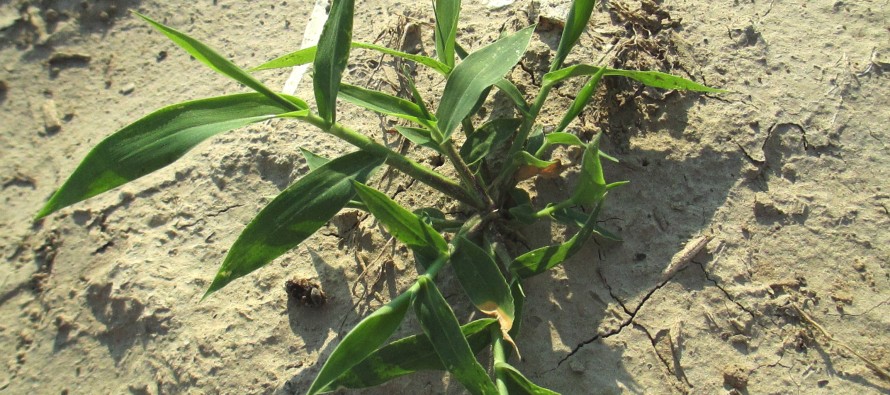Weed of the Week: Browntop Millet

Written by: Aly Shinkle, Jason Bond, and Tom Eubank
Browntop Millet
Family: Poaceae
Scientific name: Urochloa ramosa (L.) Nguyen
Synonyms: Browntop panicum; Dixie signalgrass
Browntop millet is a moderately erect to decumbent warm-season annual grass. Leaf blades are broad, flat, and hairless. Nodes are often fringed with hair, and the ligule is a membrane fringed with hair. Mature plants are typically 2.5 feet tall with erect, branched panicles measuring from 2 to 7 inches in length. Browntop millet is commonly confused with broadleaf signalgrass (Urochloa platyphylla) due to its robust leaf area and short growth habit. However, an identifying characteristic to distinguish the two species is broadleaf signalgrass’s ability to root at the nodes. Broadleaf signalgrass also has a distinct crease near the tip of each leaf blade.
Browntop millet is native to southeast Asia but has adapted well in the southern United States since its introduction in the early 20th century. It is often planted as a wildlife forage, but it is also used for erosion control and as livestock forage. Plants can grow in acidic soils and soils with low fertility. Seed are long-lived in the soil, so the species often becomes established as a weed. In Mississippi, browntop millet is found in cultivated areas, lawns, pastures, and along roadsides. When residual herbicides are not utilized, browntop millet can be troublesome late in the season in Mississippi row crops, which may complicate harvest.
Bryson, C.T. and M.S. DeFelice. 2009. Weeds of the South. Athens, GA: University of Georgia Press. pp. 422.







Let me tell You a sad story ! There are no comments yet, but You can be first one to comment this article.
Write a comment